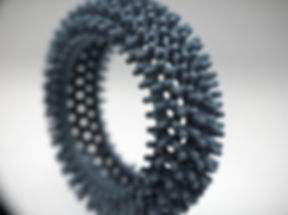
At JNE Engineering & Design LLC, we specialize in the production of high-quality, cost effective prototypes. With a wide range of technologies at our disposal, we offer several different prototyping techniques. JNE is the perfect one stop shop for all your prototyping needs.
PROTOTYPE
Benefits Of Prototyping
Display A Physical Model For Investors
Test Physical Model For Suitability
Display Appearance and Dimensions
Identify and Reduce Design Flaws
Improve and Streamline Production Process
Explore Different Colors and Surface Textures

Prototyping Techniques

Fused Filament Fabrication
FFF is the most versatile, affordable, and accessible 3D printing process available, with the widest range of applications. With this method, solid thermoplastic is heated to the desired melting temperature and extruded through a nozzle. The 3D printer deposits the melted filament, which solidifies as it cools, layer-by-layer onto a build plate along predetermined coordinates until the object is completed.
Stereolithography
SLA, light-sensitive photopolymer resins are poured into a tank, containing a submerged build surface. Using an ultraviolet-tuned laser, the resin is selectively cured one layer at a time to form a solid object. Once the printing stage has completed, the next task of cleaning begins. The printer operator puts on the recommended Personal Protection Equipment (PPE) of nitrile gloves, eye-protection, and optional respirator. The uncured resin is drained from the part, the print surface is removed and the remaining resin is washed away with solvents or chemicals. The part then undergoes an additional UV curing process.


Selective Laser Sintering
SLS utilizes powdered synthetic polymers, which are distributed by a blade or scraper onto a build area one layer at a time. Selected portions are fused together using a high-powered laser, and the process is repeated layer by layer until the object is completed. This method primarily uses polyamides, commonly referred to as nylon, or PA for short. Support material is not necessary with this method of 3D printing, and the finished parts may have a grainy appearance with no visible layer lines.
Rapid Prototyping

Rapid Prototyping is often used to produce a physical sample of a design concept. It can be used to evaluate form, fit and function and to test out new and innovative ideas.
Prototypes are often made of less robust, and therefore less expensive, materials. And “rapid” is critical to many of our clients because they need to produce a physical part quickly in order to validate a design or to capture a fleeting sales opportunity.
CNC Machining
CNC Machining is ideal for making prototypes from engineering plastics or metal and which look and feel like production made parts. They are able to achieve tighter tolerances with better surface finishes than other prototyping methods.
Our machined prototypes have all the features needed to make a fully functional part, including tapped and threaded holes and precisely flat mating faces.


Vacuum Casting
Vacuum Casting is a rapid prototyping technique suited for making several copies of a master pattern from a silicone rubber mold. The level of detail and surface finish of the copies is dependent on the quality of the master pattern.
You choose the casting compound to match your design idea – hard or soft, colored or clear. We even offer overmolding to combine two or more different types of material in a single finished casting.

